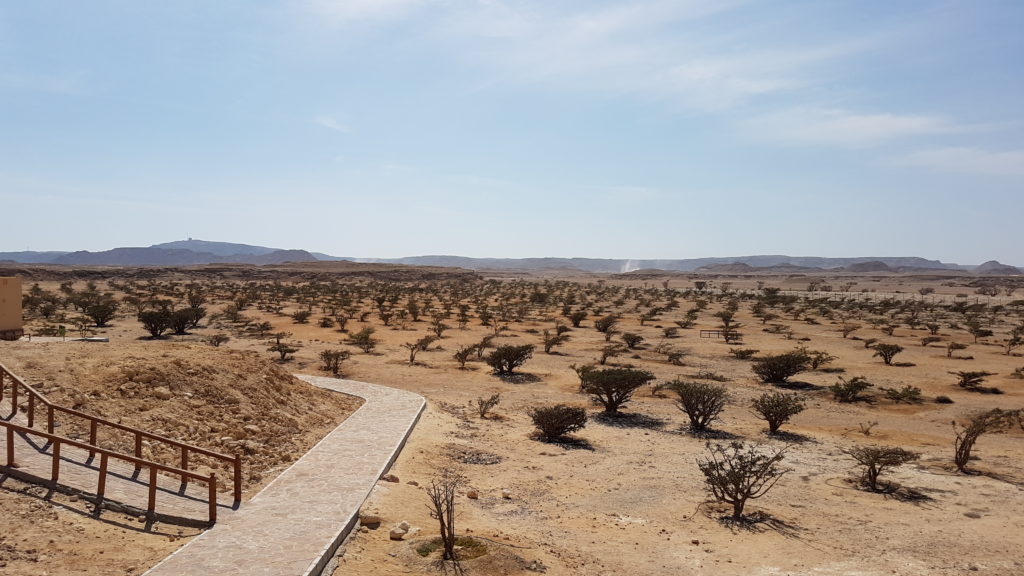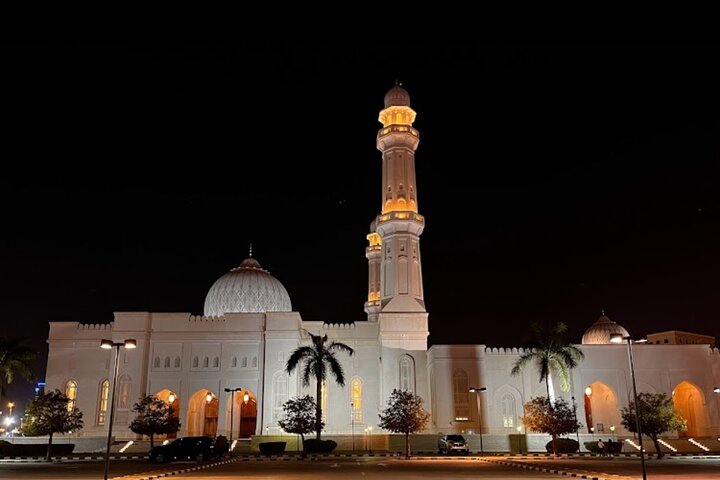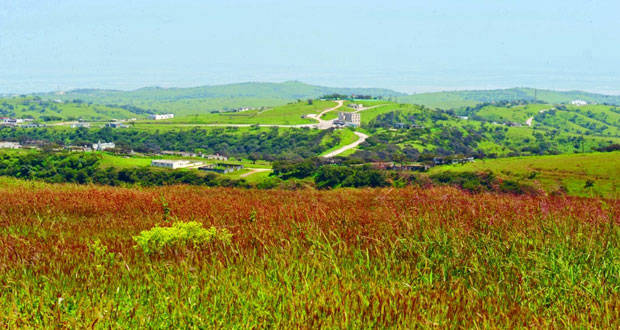Introduction: Where the Desert Blooms with History
In the golden landscapes of Oman’s Dhofar region lies Wadi Dawkah, a serene valley that holds centuries of history within its rugged terrain. Recognized as part of the UNESCO World Heritage Site – Land of Frankincense, Wadi Dawkah is home to hundreds of wild Boswellia sacra trees, known worldwide for producing the finest frankincense resin.
For European travelers seeking authenticity, heritage, and nature, Wadi Dawkah is more than a scenic stop—it’s a living museum where the ancient incense trade comes to life, surrounded by peaceful desert beauty.
A UNESCO World Heritage Treasure
Wadi Dawkah earned its place on the UNESCO list for its role in the historic frankincense trade. For thousands of years, this valley was a key source of the resin that fueled international commerce, cultural exchange, and religious traditions across the Mediterranean, Rome, and beyond.
The site is part of the Land of Frankincense, which includes:
- Khor Rori – The ancient port that shipped frankincense to Europe.
- Al-Baleed Archaeological Park – An urban center of the incense trade.
- Shisr/Ubar – The fabled “Lost City” of the desert.
Visitors to Wadi Dawkah step into a landscape unchanged for centuries, where the gnarled trunks of Frankincense trees whisper stories of caravan journeys and coastal trade.
What Makes Wadi Dawkah Special for Visitors
- Authentic Frankincense Groves
The valley is home to over 5,000 protected Boswellia sacra trees, each one carefully monitored to ensure sustainable resin production. - Scenic Natural Beauty
Against the backdrop of Dhofar’s rocky mountains and open skies, the pale green leaves and twisted branches of frankincense trees create a striking contrast with the desert floor. - Educational Experience
Information boards and local guides explain the history, botany, and harvesting traditions, making it a meaningful visit for travelers interested in culture and ecology. - Photographic Opportunities
From golden sunrise over the valley to close-up shots of resin tears, Wadi Dawkah offers scenes perfect for travel photography.
The Frankincense Tree Connection
Wadi Dawkah is the largest natural grove of Frankincense trees in Oman. The Boswellia sacra here produces some of the purest resin in the world, known for its sweet, citrusy aroma. The harvesting process is still done by hand—skilled farmers make small cuts in the bark, allowing the resin to flow and harden before being collected.
European travelers often find this process fascinating, as it connects them to ancient trade networks that once linked Dhofar to Greece, Rome, and Byzantium.
How to Visit Wadi Dawkah
- Location: About 40 km north of Salalah, accessible by a smooth, paved road.
- Best Time to Visit: October to April for cooler weather; July–September during Khareef for lush green surroundings.
- Duration: Most visitors spend 1–2 hours exploring the valley and its interpretive signs.
- Facilities: Shade shelters, walking paths, and parking are available.
Nearby Attractions to Combine with Your Visit
- Zigzag Road – A thrilling mountain drive with panoramic views.
- Hidden Beach – A secluded stretch of sand perfect for relaxation.
- Mughsail Beach & Blowholes – Iconic coastal scenery with natural water spouts.
- Al-Baleed Archaeological Park – For a deeper dive into frankincense history.
Combining Wadi Dawkah with these stops makes for an unforgettable day trip in Dhofar.
Why European Travelers Love Wadi Dawkah
- Cultural Depth – It’s a rare chance to see a heritage site still active in its traditional role.
- Wellness Connection – Many visitors are drawn to frankincense for its therapeutic uses in aromatherapy and skincare.
- Photography & Nature – The grove is ideal for slow travel and mindful exploration.
- Authentic Souvenirs – Purchase resin directly from local markets after your visit, knowing exactly where it came from.
Tips for an Enriching Visit
- Bring water, a hat, and sunscreen—shade is limited.
- Visit early morning or late afternoon for the best light.
- Consider hiring a guide who can share local legends and harvesting techniques.
- Pair your visit with a stop at a Salalah souq for frankincense shopping.
Responsible Tourism & Preservation
Oman’s Ministry of Heritage and Tourism works to protect Wadi Dawkah through strict regulations. Only licensed harvesters may collect resin, ensuring the trees remain healthy for generations to come. Tourists contribute to conservation by respecting pathways, not damaging the trees, and supporting local communities.
By visiting responsibly, you help preserve one of Oman’s most valuable cultural and natural treasures.
Conclusion: A Valley Steeped in Scent and Story
Visiting Wadi Dawkah is like stepping into a chapter of living history. The combination of stark desert beauty, the scent of frankincense, and the echoes of ancient trade makes it one of Salalah’s most enriching experiences.
For European travelers seeking an authentic, immersive connection to Oman’s heritage, this valley offers the perfect blend of culture, nature, and storytelling. Standing among the frankincense groves, with resin scent in the air and desert winds on your face, you’ll understand why this place has been treasured for millennia.



